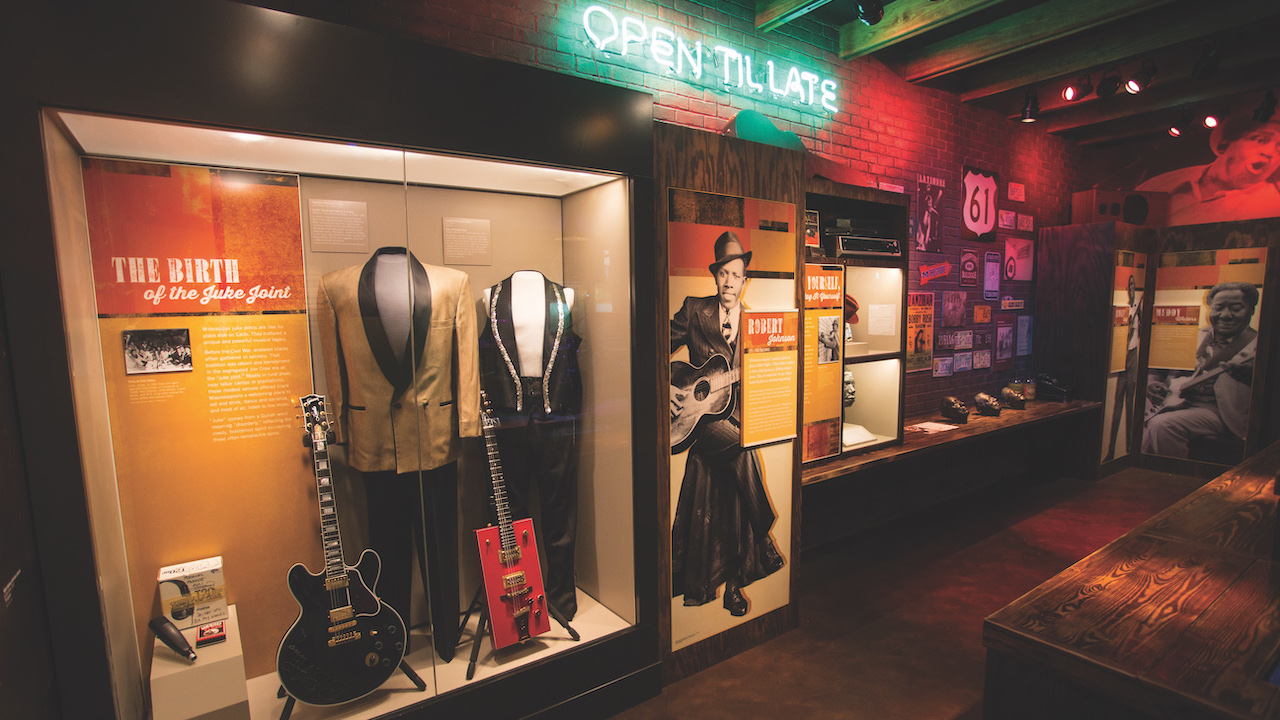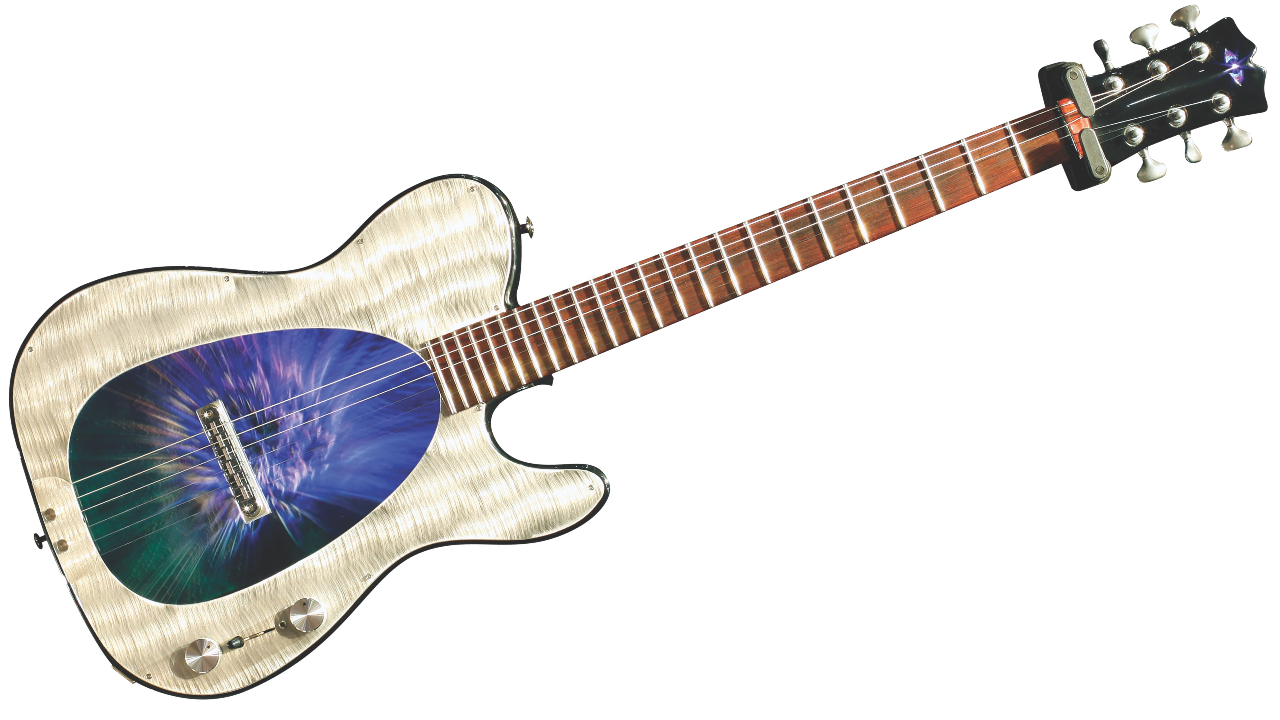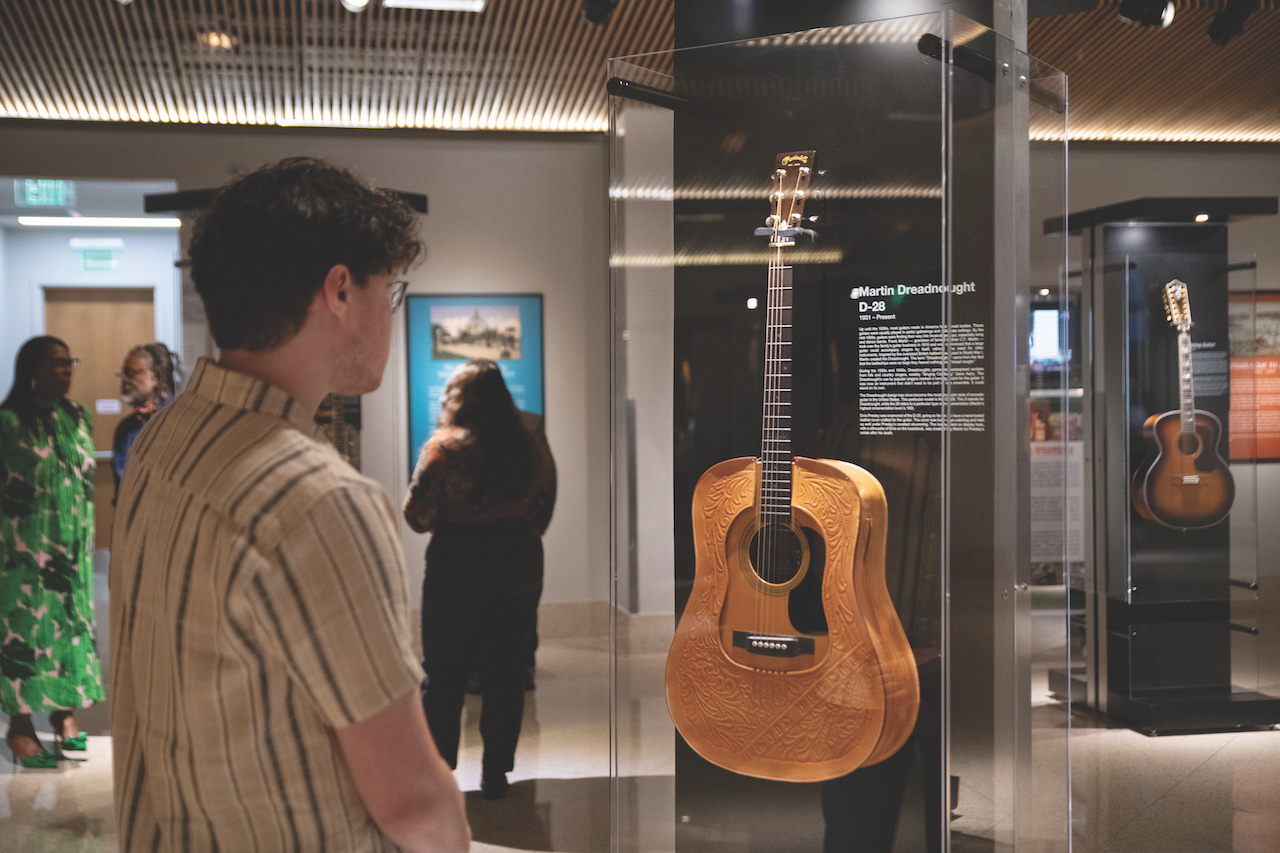“We’re the birthplace of blues, country and rock and roll music, and the guitar is at the core of all of it”: The America at the Crossroads exhibit charts the guitar’s history with instruments owned by Bo Diddley, Muddy Waters, B.B. King, and more
A new exhibit at The MAX museum explores the guitar’s cultural impact through dozens of significant instruments – from a stunning custom Martin D-28 built for Elvis Presley's estate to a rickety Soviet-era Tonika model

Guitar players and enthusiasts will find a coterie of familiar faces adorning the Hall of Fame rotunda at the Mississippi Arts + Entertainment Experience (a.k.a. The MAX), an interactive museum in Meridian that honors the state’s famed writers, actors, musicians, and other cultural figures.
As the structure ascends from the ground floor through the center’s galleries and toward the open sky, the visages of Robert Johnson, B.B. King, Muddy Waters, Jimmie Rodgers, Howlin’ Wolf, Bo Diddley, John Lee Hooker, and Marty Stuart cast a message to visitors that’s echoed in the state’s tourism slogan: “The Birthplace of American Music.” No state has a more solid claim to it than Mississippi.
“We’re the birthplace of blues, country and rock and roll music,” says Penny Kemp, president and CEO of The MAX. “And the guitar is at the core of all of it.” Meridian itself has a hefty guitar legacy as the home of Rodgers, seen by many as the father of country music, as well as Peavey Electronics, which pioneered CNC technology in guitar making in the 1970s.
Beyond the museum’s own collection of notable guitars – including Diddley’s rectangular red Gretsch G6138, Hooker’s Wine Red Gibson SJ-200, Waters’ Gretsch Synchromatic and one of B.B. King’s “Lucille” Gibson ES-355s – there are more reasons for guitar fans to visit this spring.

Through May 11, The MAX is hosting America at the Crossroads: The Guitar and a Changing Nation, presented by the National Guitar Museum. There, visitors can see 40 of the most important guitars ever made, from the National Guitar Museum’s collection of 200 historic instruments, and learn how the instrument has impacted American history.
“The guitar kept showing up anytime you were looking at a huge cultural movement,” says H.P. Newquist, founder of the National Guitar Museum. “Look at the Vietnam War. You had people like Hendrix and John Fogerty writing songs that featured searing guitars, emulating the sounds of bombs with them, and becoming emblems of the opposition to the war. And you had plenty of guys going off to war who were taking their guitars with them.”
The story of the guitar in America dates to colonial times, beginning with explorers and settlers who brought their instruments with them across the Atlantic Ocean. By the late 1800s, guitars were parlor instruments to be played at home.
All the latest guitar news, interviews, lessons, reviews, deals and more, direct to your inbox!
“Prior to World War I, women played guitar more than men did. The parlor guitar was designed primarily to fit a woman’s body and hands and arms,” Newquist says. “And then you move forward into the mid-1950s and you have people like Mother Maybelle Carter, who really invented their own style of strumming and picking that changed the sound of country music.”
As guitars became more affordable through retailers like Sears, Roebuck and Co, African-American sharecroppers in the Mississippi Delta and other parts of the South adopted the instrument and evolved blues music from spirituals and field hollers. Charley Patton, Robert Johnson, Son House, and other early bluesmen traveled from farm to farm, visiting plantations like Dockery and Stovall, where they entertained share-croppers with their homespun tales and slide guitar licks.
The guitar remained the driving force as blues gave way to rock and roll in the hands of Ike Turner, Chuck Berry, and other Black artists on the chitlin’ circuit, but this new music wasn’t strictly a gentleman’s club. As in the parlor days, women like Sister Rosetta Tharpe and Cordell Jackson were fierce guitarists. The multimedia portion of America at the Crossroads shows how much Tharpe brought to the stage.
“Rosetta Tharpe should have been the very first person ever inducted into the Rock & Roll Hall of Fame,” Newquist says. “She did a better job at ringing solos out of that guitar than a lot of people we give more recognition to today.”
In showcasing its many guitars, the exhibit emphasizes the instruments’ authenticity over the hands that played them. A Rickenbacker Electro A-22 “Frying Pan” provides an introduction to the electric guitar era, while models like the Fender Stratocaster and Gibson Les Paul segue to the rock and roll explosion, and a venerable Martin D-28 speaks to blues, folk, and protest music.
Visitors will find curiosities, too. One of H.P. Newquist’s favorite guitars in the exhibit is a Soviet-era Tonika model that traveled across the Atlantic and reached the museum intact, despite being wrapped in just a garlic sack for protection against the elements and other hazards of shipping. Its origin story illuminates another piece of American history.
“In the Cold War, American goods weren’t sold in the Soviet Union,” Newquist says. “Youth were listening to pirated radio, and they wanted to play guitar but they couldn’t import them. So they created instruments they thought looked like a Stratocaster but which really look like a copy of a copy of a copy. You can’t plug it into anything modern.”

Back at home, Peavey Electronics founder Hartley Peavey, who built his first guitar amps a few blocks away from The MAX, adapted computer-controlled routing technology for the guitar-making process for the Peavey T-60 model, thereby vastly increasing the number of guitars that could be made while making consistency a priority. A T-60 prototype is part of the exhibit.
Performances by artists like Pat Metheny and Super Chikan, as well as workshops around guitar making, will be on tap during the exhibit’s run. Visitors can also enhance their visit by engaging interactive modules in The MAX’s permanent exhibits that give an even fuller picture of the guitar’s role in the story of America’s music.
“All the blues artists are heavily represented in the Juke Joint gallery, where visitors can learn more about each artist’s origins, inspirations, and collaborations,” Kemp says. In addition to sampling their music, visitors can form their own virtual band in an interactive exhibit. On guitar? The options are Diddley, Hooker, King and Waters – a dream team no matter who they pick.
- America at the Crossroads: The Guitar and a Changing Nation runs at The MAX in Meridian, Mississippi, through May 11. Find more information on the exhibit and its events right here.
Jim Beaugez has written about music for Rolling Stone, Smithsonian, Guitar World, Guitar Player and many other publications. He created My Life in Five Riffs, a multimedia documentary series for Guitar Player that traces contemporary artists back to their sources of inspiration, and previously spent a decade in the musical instruments industry.


